Tyrosine Kinase
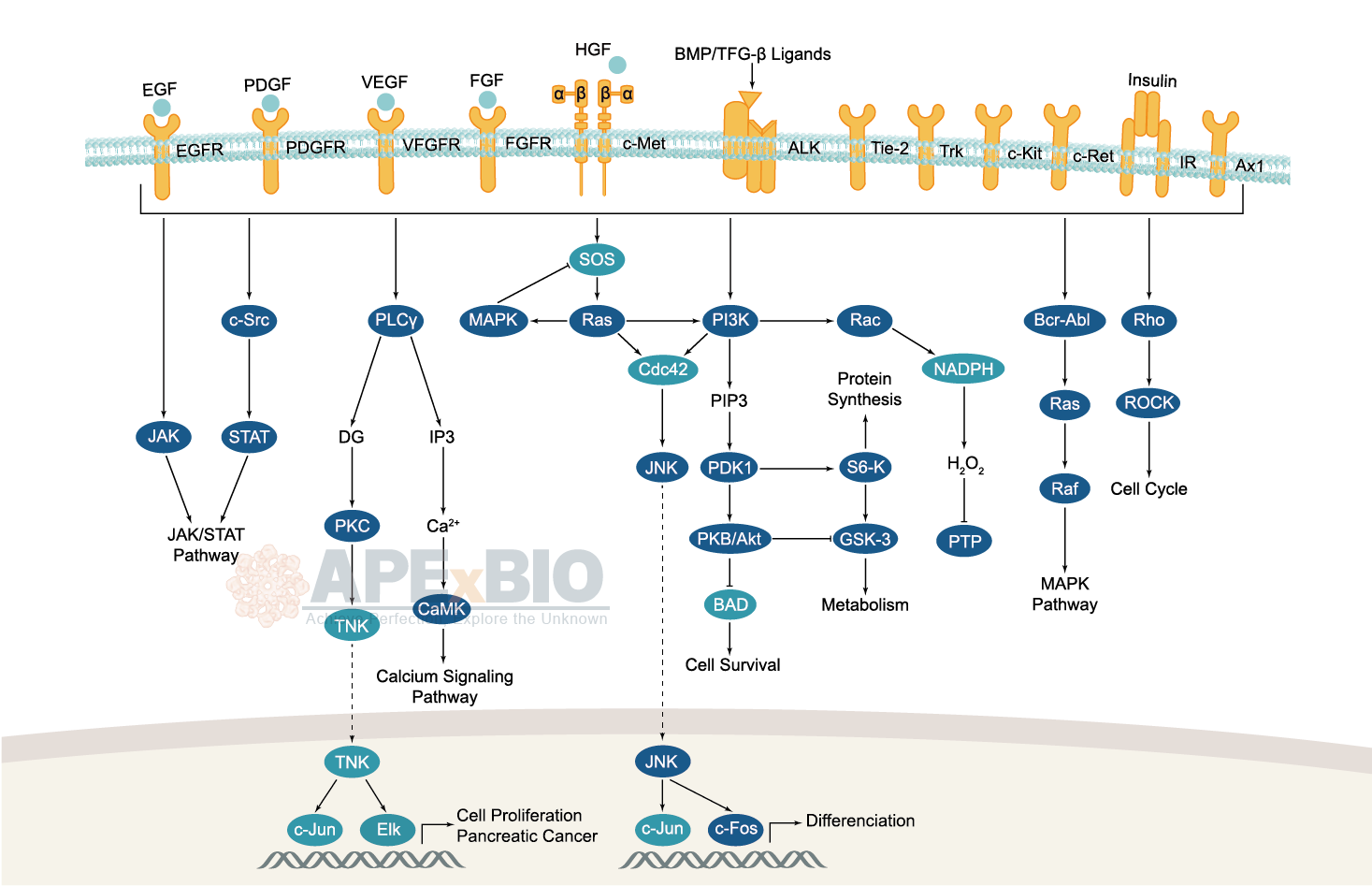
Receptor tyrosine kinases bind to extracellular ligands/growth factors, which promotes receptor dimerization and autophosphorylation of receptor tyrosine residues. This triggers a cascade of downstream events through phosphorylation of intracellular proteins that ultimately transduce the extracellular signal to the nucleus, causing changes in gene expression. Receptor tyrosine kinases include EGFR/ErbB, PDGFR, VEGFR, FGFR and MET subfamilies etc. Dysfunctions in tyrosine phosphorylation are linked to oncogenic transformation. In additions, various adaptor and effector proteins couple to carboxy-terminal of an active kinase. For instance, binding of the GRB2 adaptor protein activates EGFR and MAPK/ERK signaling.
Non-receptor tyrosine kinases involve many well-defined proteins (e.g. the Src family kinases, c-Abl, and Jak kinases) and other kinases which regulates cell growth and differentiation. For example, Src family kinases are curial for activating and inhibitory pathways in the innate immune response.
-
 B4899 BLZ9451 CitationTarget: CSF-1RSummary: CSF-1R kinase inhibitor
B4899 BLZ9451 CitationTarget: CSF-1RSummary: CSF-1R kinase inhibitor -
 B5816 PLX647Summary: dual inhibitor of FMS and KIT kinases
B5816 PLX647Summary: dual inhibitor of FMS and KIT kinases -
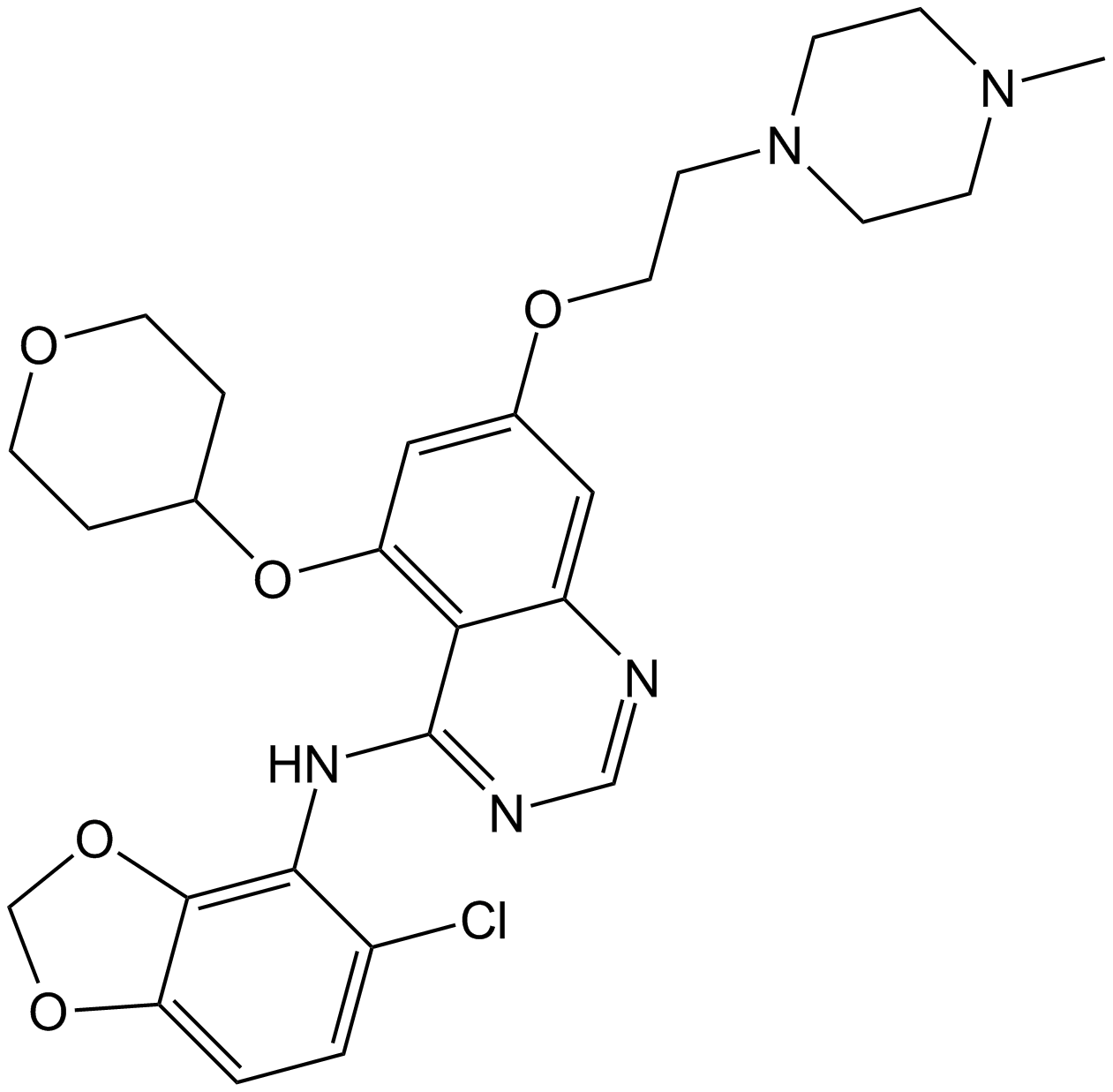 A2133 Saracatinib (AZD0530)3 CitationTarget: SrcSummary: Src/Abl inhibitor,potent and selective
A2133 Saracatinib (AZD0530)3 CitationTarget: SrcSummary: Src/Abl inhibitor,potent and selective -
 A5979 Tie2 kinase inhibitorTarget: Tie-2Summary: Tie-2(Tie2 ) inhibitor
A5979 Tie2 kinase inhibitorTarget: Tie-2Summary: Tie-2(Tie2 ) inhibitor -
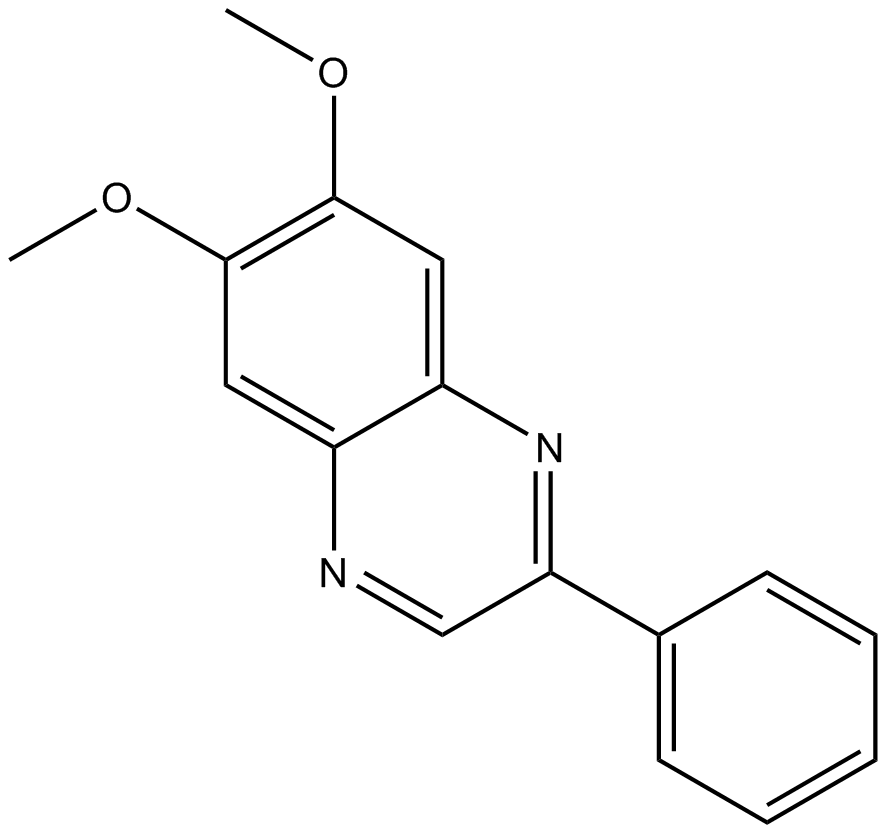 A2477 Tyrphostin AG 12961 CitationTarget: PDGFRSummary: PDGFR inhibitor,selective and ATP-competitive
A2477 Tyrphostin AG 12961 CitationTarget: PDGFRSummary: PDGFR inhibitor,selective and ATP-competitive -
 A1367 ALK-IN-1Summary: Anaplastic lymphoma kinase (ALK) inhibitor
A1367 ALK-IN-1Summary: Anaplastic lymphoma kinase (ALK) inhibitor -
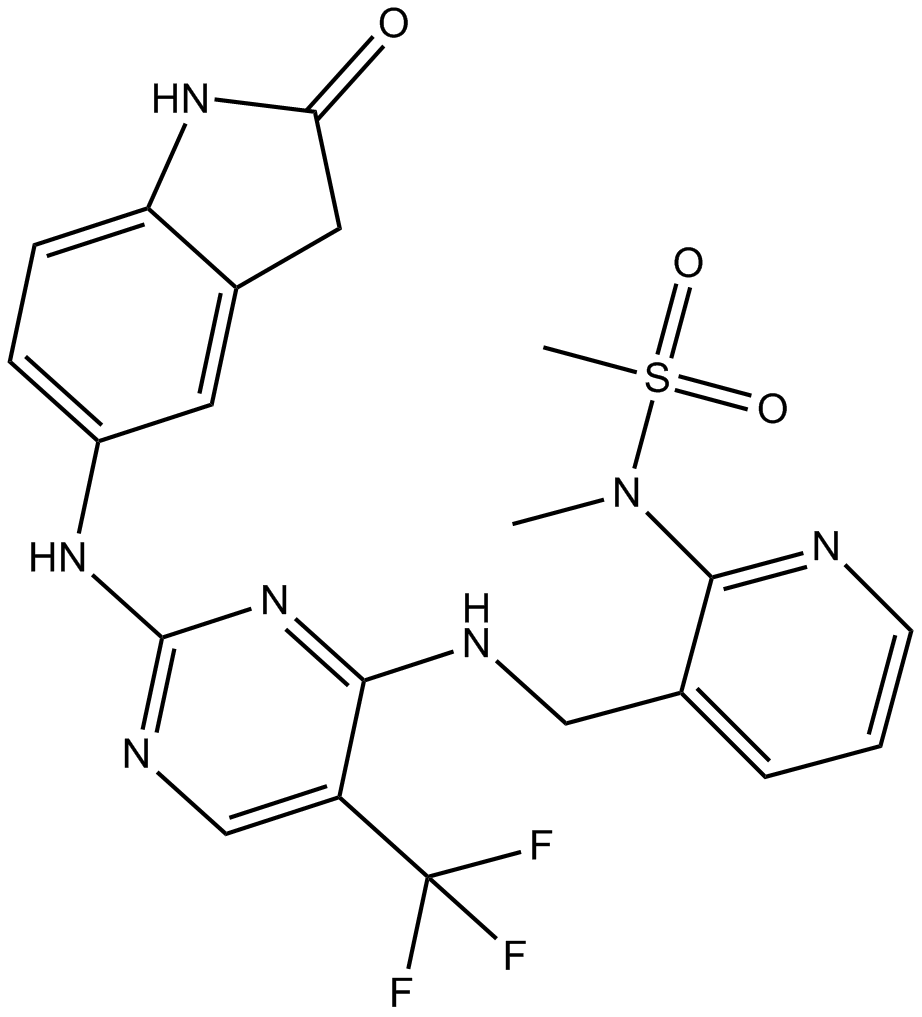 A8310 PF-5622711 CitationTarget: FAK|Pyk2Summary: ATP-competitive FAK inhibitor, reversible
A8310 PF-5622711 CitationTarget: FAK|Pyk2Summary: ATP-competitive FAK inhibitor, reversible -
 B1262 HG-10-102-011 CitationTarget: LRRK2Summary: LRRK2 inhibitor
B1262 HG-10-102-011 CitationTarget: LRRK2Summary: LRRK2 inhibitor -
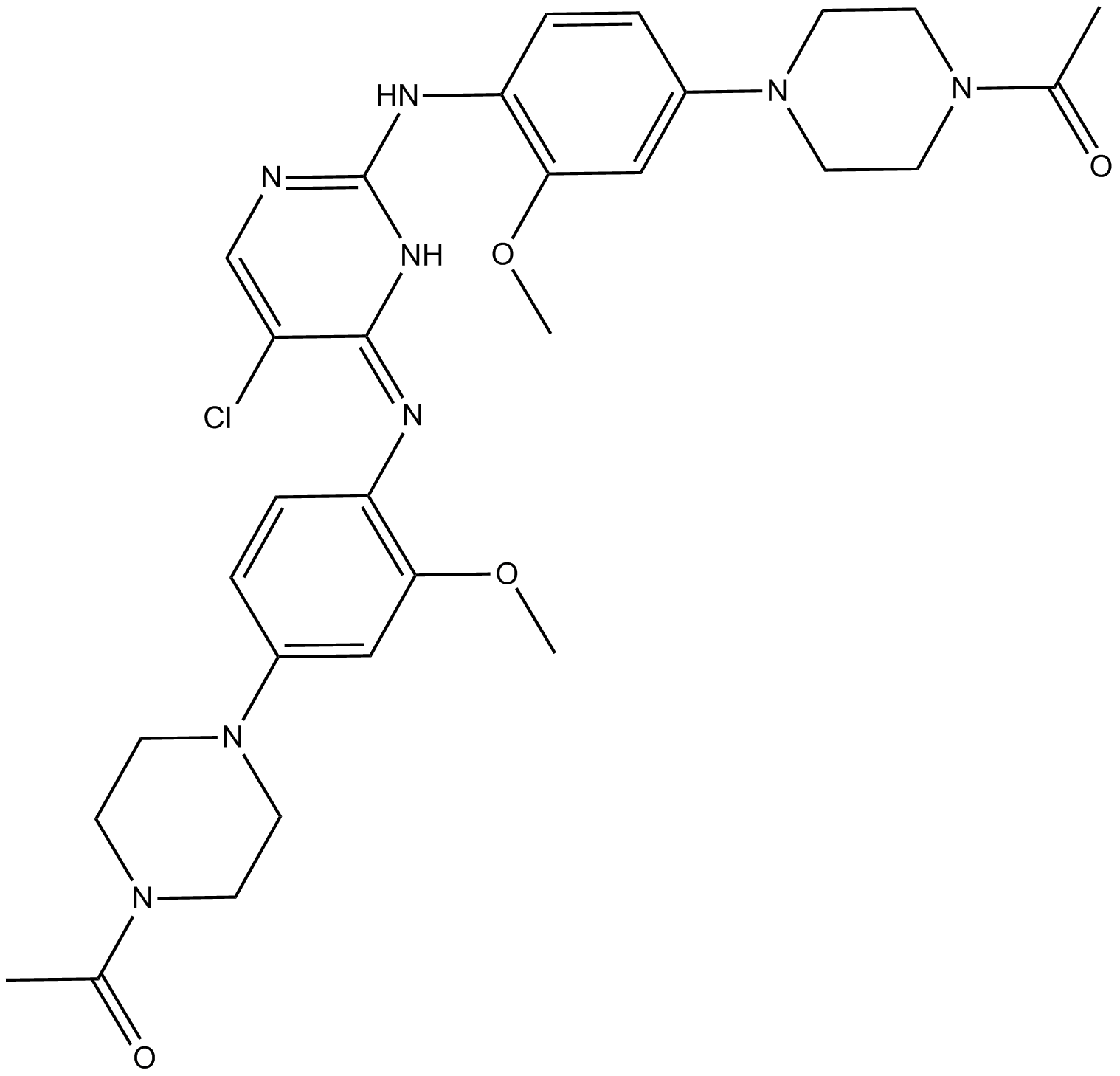 B7749 KRCA 0008Summary: Ack1 and anaplastic lymphoma kinase (ALK) dual inhibitor
B7749 KRCA 0008Summary: Ack1 and anaplastic lymphoma kinase (ALK) dual inhibitor -
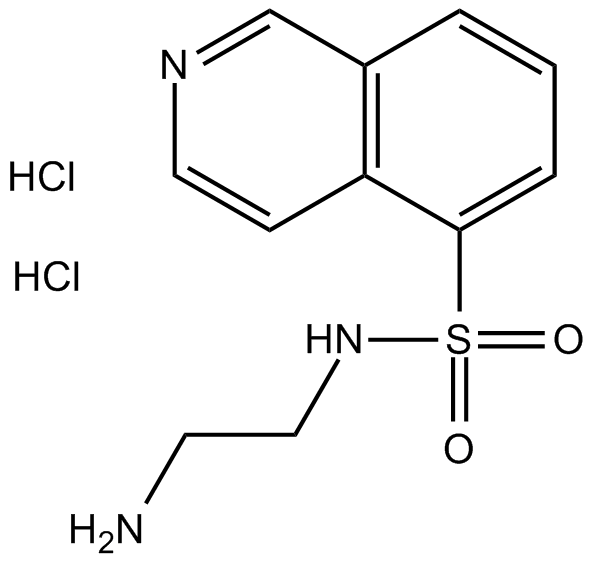 B5001 H-9 dihydrochlorideSummary: Protein kinase inhibitor
B5001 H-9 dihydrochlorideSummary: Protein kinase inhibitor

